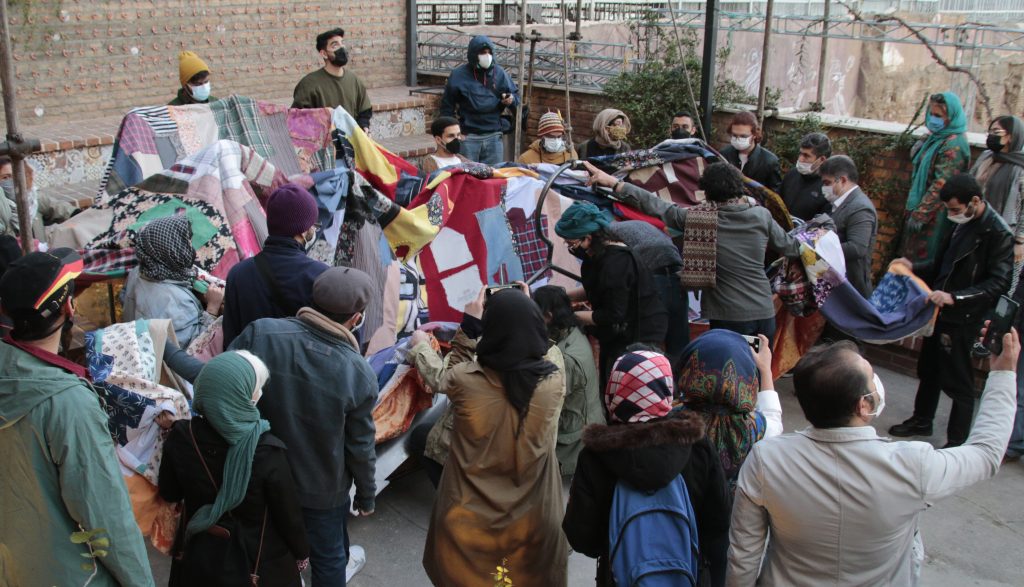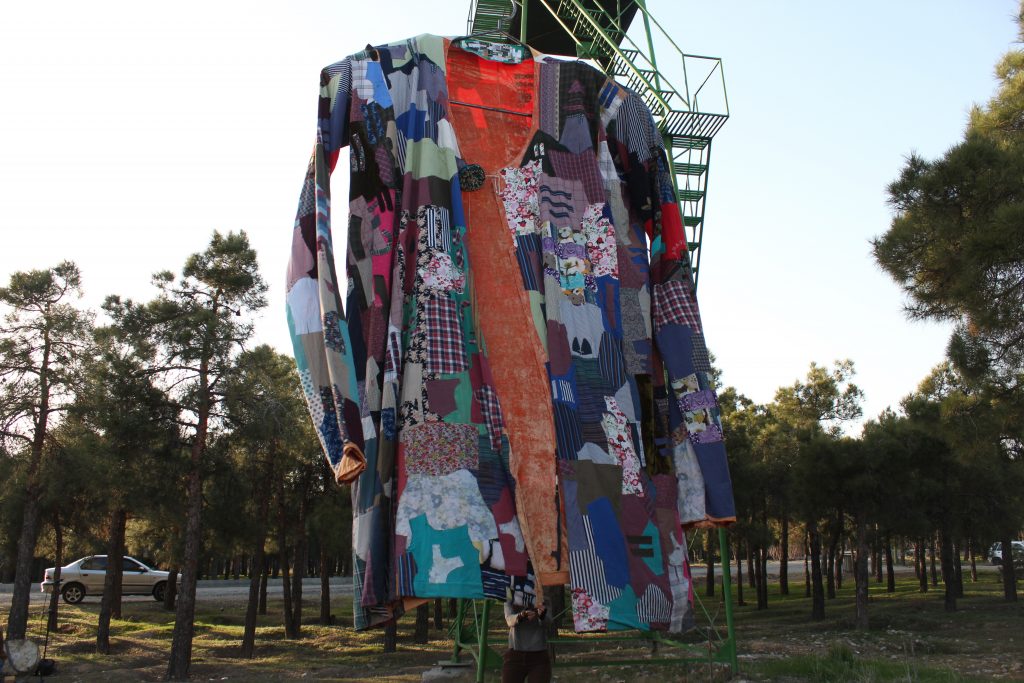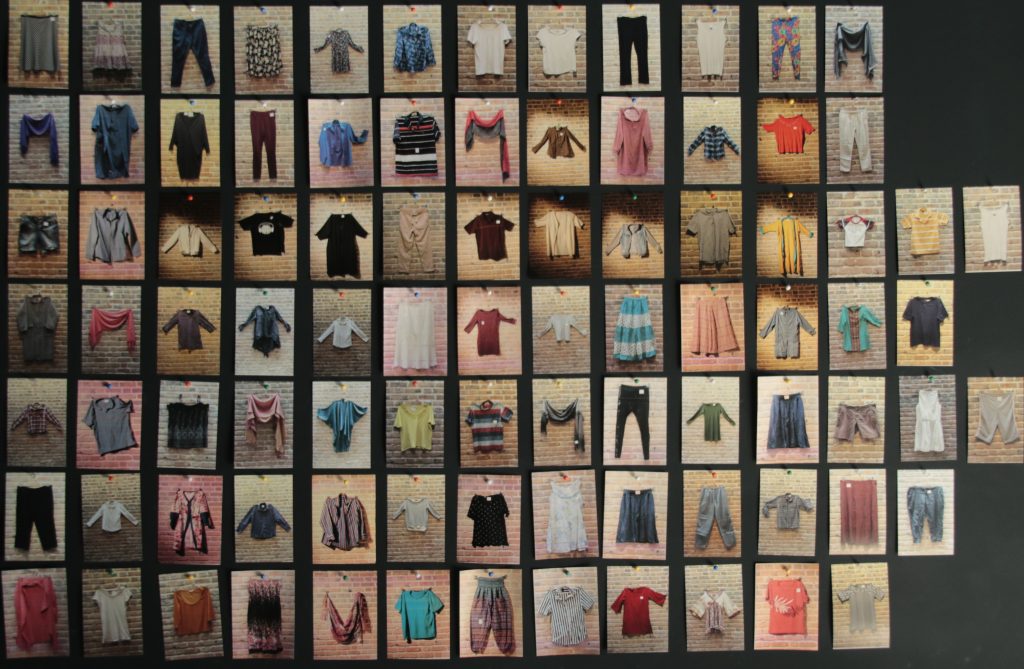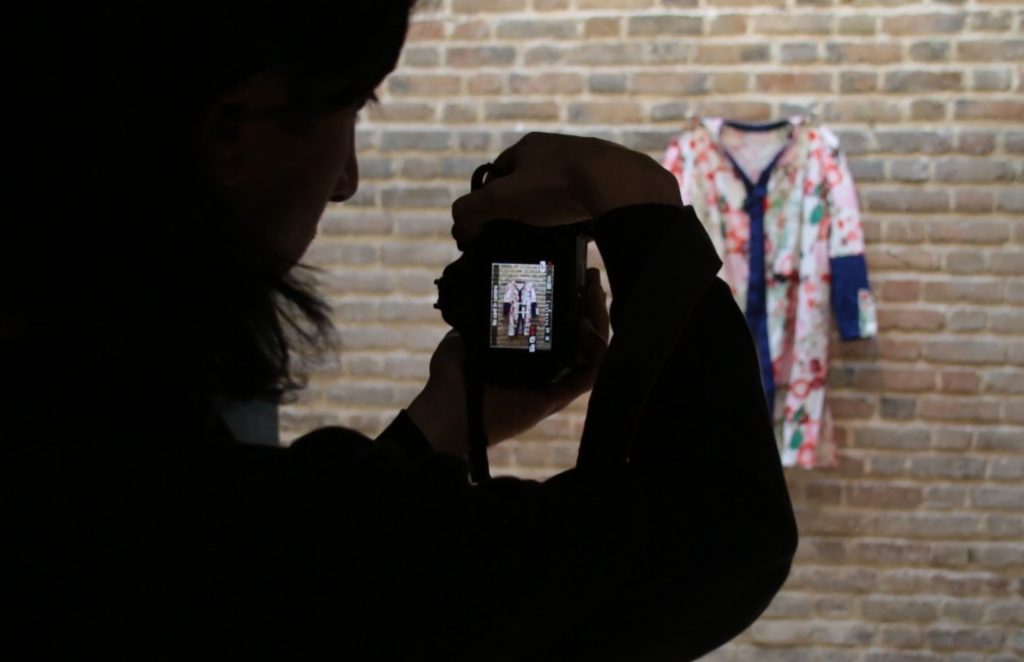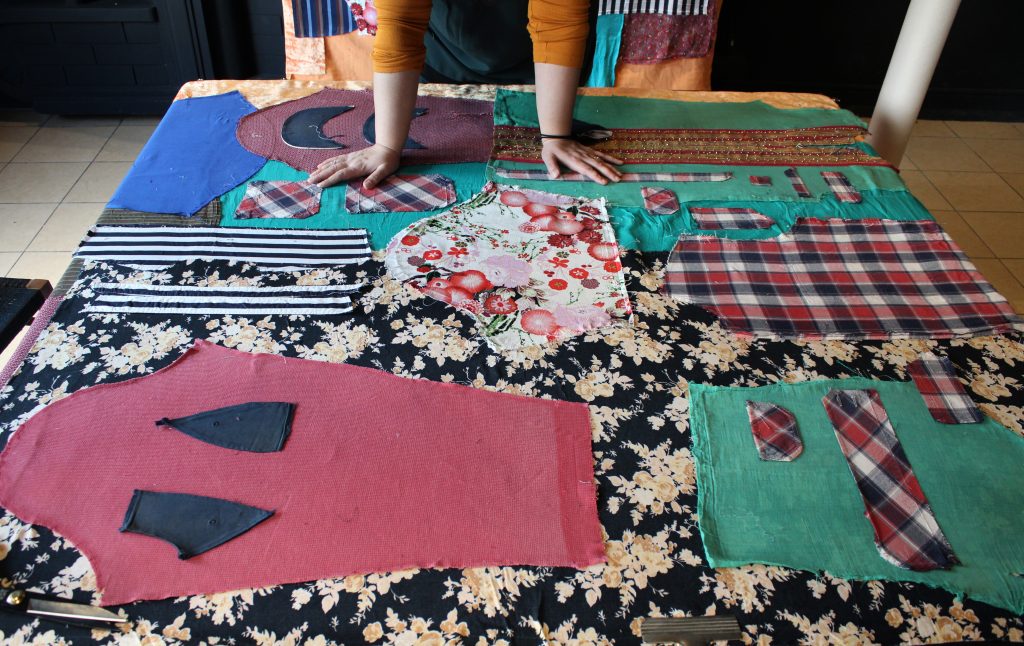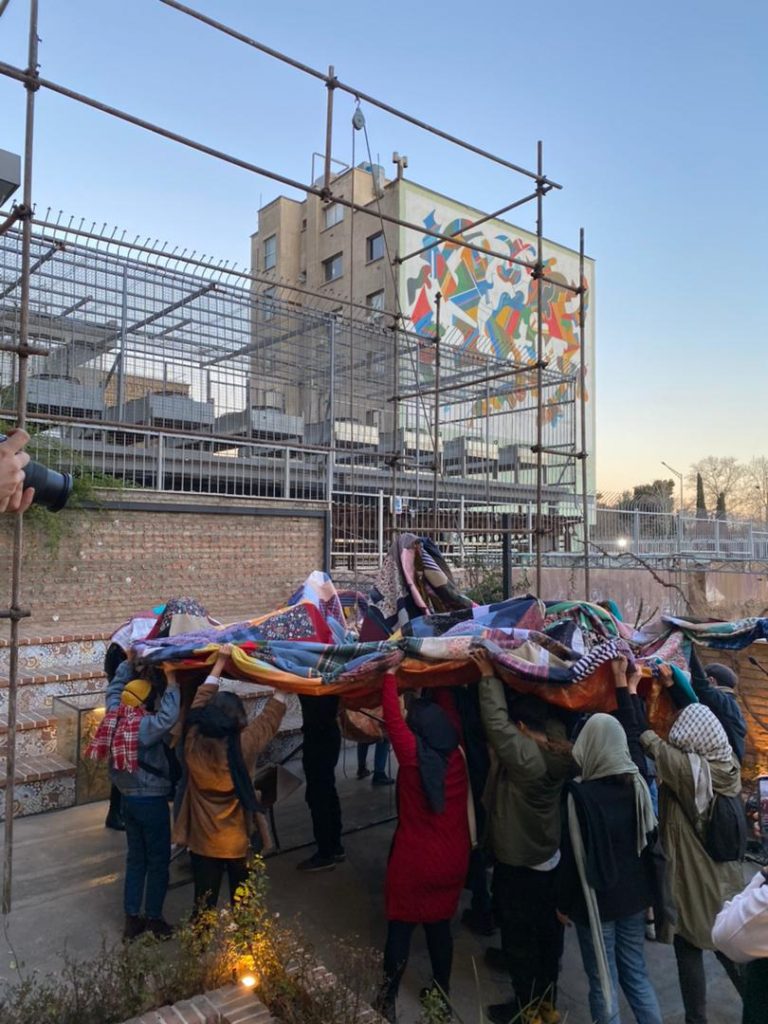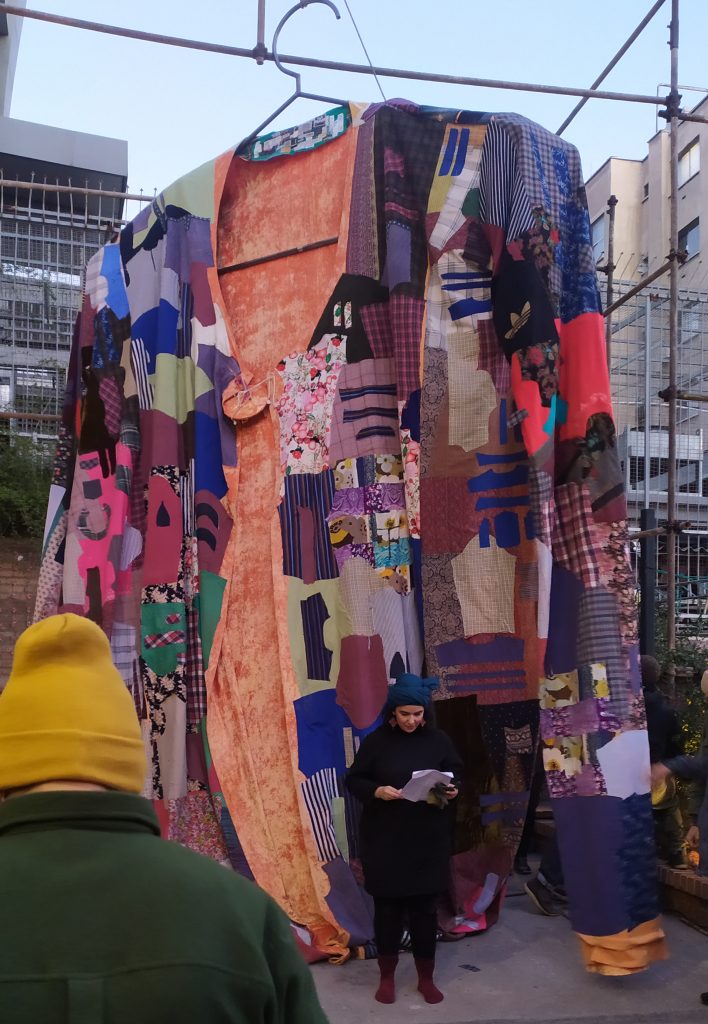Performance / Installation
January February 2021/ Tehran at Rooberoo mansion
In collaboration with Ahmadali Kadivar, Ahmad Jafari, Maral Ashgevari, Parastou Sadeghi.
In this project, 100 letters were sent to the friends, relatives and acquaintances of the organizing team. In the letter, we described how we missed their hugs that have been withheld from us for a year due to COVID. We then asked them to send us an old dress or piece of clothing that has taken the form of their body that is old and unused and whose life in their closet has come to an end.
In response to our letter, which was sent by mail courrier across the city,, the recipients sent their old clothes to the location of the workspace, which took the temporary name “An Equivalence Of Our Distance”, and was set up in a back room of an experimental theatre, located down a small hidden alley in a mid-century mansion that was abandoned but has now become a performing arts Center in the center of Tehran. The workspace consisted of three parts: Registration of the clothes,Dismantling the clothes, Re-stitching/sewing the fabrics together.
After being photographed and coded as part of registration, the clothes were passed onto a hanging rail to the section where they were unstitched. Here, ten small seam rippers and chairs were installed for visitors of the workspace who would like to participate in the process of splitting. Participants, in masks, could sit distanced and take the clothes apart, stitch by stitch, while seated next to each other, while talking or telling stories or even singing along. The workspace installation lasted seven to eight hours a day for three weeks. Participants spent many days returning to the workspace to split a particular pair of clothes that they had started to open.
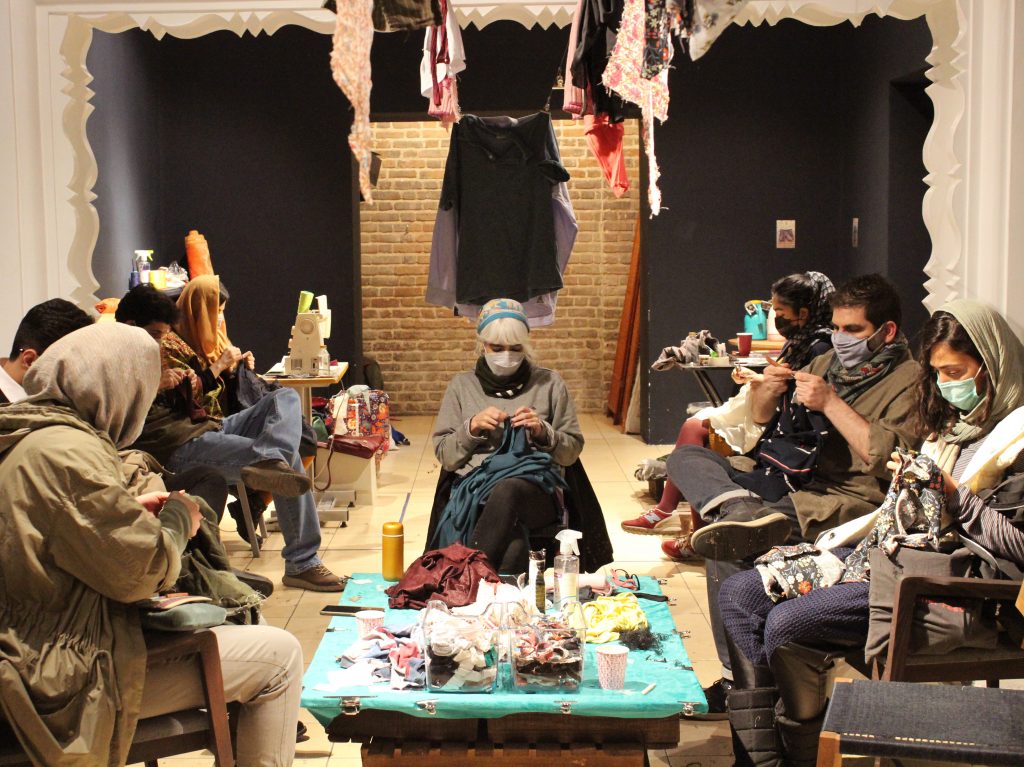
Garments that had been fully unstitched and had been broken down into the smallest of their constituent parts were sewn together in the connecting section. And at the end of three weeks of continuous work of splitting and re-connecting, the combined fabric reached ninety square meters. In the next step, these fabrics were prepared to be merged into a single and large garment. At this point, the arrangement of the workspace changed, and various music groups, including an Azeri-speaking female singer and a group of Afghan musicians and singers, performed among the rolls of cloth hanging from the ceiling alongside the sound of a sewing machine. During this time, the remaining parts of the large garment, such as the buttons made from all the split buttons of the clothes, and the label on the back of the garment, which was a combination of all the clothes’ labels, were finished.
On the final day of the show, the fabrics made from the torn clothes in the workshop were sewn together one after the other. On the last day, visitors could watch the last parts of the coat from the window of the workspace, while a microphone played the sound of the sewing machine in the courtyard of the theater, and sounds inside the workspace could be heard from outside.
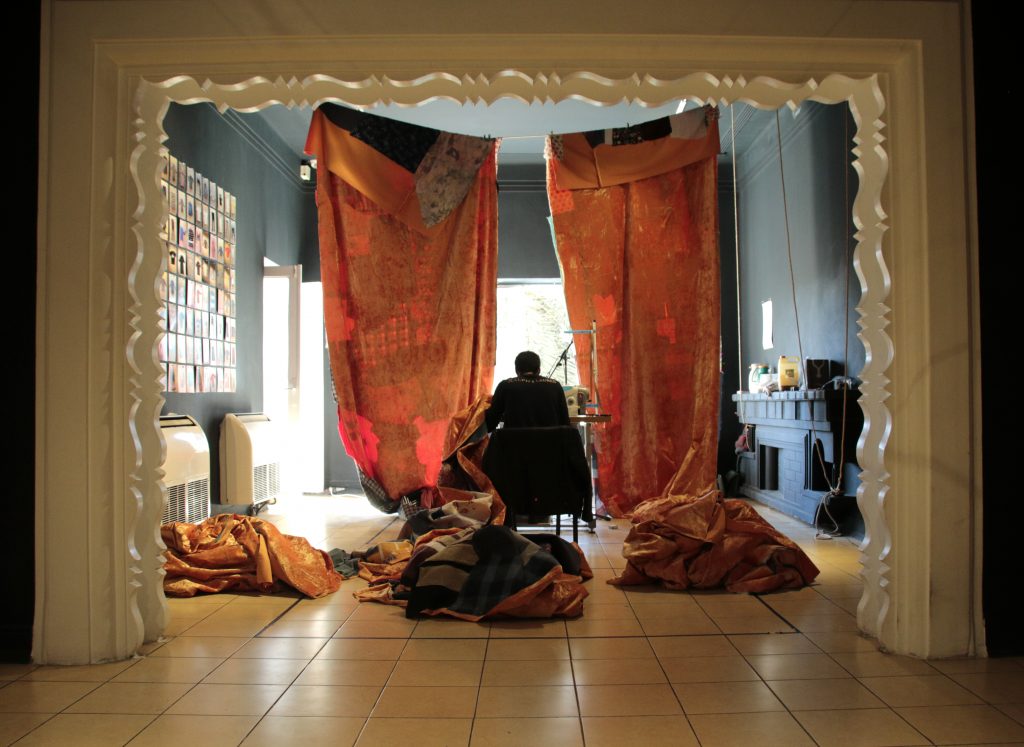
At the end of the construction process, the large coat that had been created from all of the pieces of fabric reached the visitors through the location’s window, and from there it was hung atop a large hanger that had been built before. with the help of the audience, the coat was mounted on the hoop, and it was pulled up with collective force and effort on the rope that carried the hanger. A statement was then read out loud. In this statement, first, the city where the clothes were made was named according to the location of their factories—Vietnam, Bangladesh, Turkey, and so on— and then the neighborhoods of Tehran and other cities from which the garments reached the “distance” workspace were named—Karimkhan, Iranshahr, Behjat abad, etc. At the same time, initial photos of the workshop’s received clothes, which were now placed in the body of the large dress, were distributed among the crowd, and each visitor took home a picture of a dress. On this day, three folk musicians of Naqareh and Korna accompanied the ceremony, these musicians played pieces called Sahar Avazi (normally played on early mornings after sunrise in the village, during a wedding party) and Jang Nameh, HeleJa (Nomad’s folk music from the Fars province, Iran) while the audience were carrying clothes and lifting it on the hanger.
